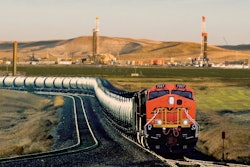In a large facility, like the one a specialty chemical company operates, there are often many opportunities for energy savings. By using the appropriate monitoring systems for all their different processes, dramatic cost savings can be realized while running at peak efficiency. Debra Hall, of Control Instruments Corporation, shared with Chem.Info some of the benefits of monitoring and controlling processes with gas detection analyzers in order to save money and emissions.
The Project
A customer, a leading supplier of performance polymers, was increasing the production capabilities of one of its four process lines. The increase in production capabilities would come from the upgrade of several process heating sources such as heat exchangers, and dryers, as well enhancing the safety of these systems to accommodate increased production loads. They worked with the Regional EPA in their Pollution Prevention (P2) Program to add an appropriate‐sized oxidizer and enhance their flare operations for its increased production capabilities and to upgrade their LFL monitoring system on their batch dryer for safety reasons. The goal was to increase energy efficiencies and optimize productivity while reducing emissions, thus saving money.
The Scope of Work
The company planned to use a continuous Total Hydrocarbon (THC) monitor on their catalytic oxidizer to track their annual VOC emissions on an hourly basis. This would give them real‐time data of their annual emissions, helping them understand their short term emission limits, and ultimately giving them more flexibility in making changes to their process.
They also wanted to use a real‐time continuous BTU analyzer to read the lower heating value of their waste stream going into their flare. The intent would be to inject natural gas into the flare gas stream if the heating value of the waste stream were to drop below 350 BTU/scf to keep the flare operating >98% destruction efficiency.
On their batch dryers, they decided to upgrade their LFL analyzers to measure the % LFL in the dryer stream that removes low levels of hydrocarbon solvent from their product. This allowed the dryers to be shut down quickly in the case that the % LFL gets too high.
The Solution
The company chose to use Control Instruments’ Gas Detection Analyzers due to their ability to read multiple gases at different concentration levels accurately under industrial conditions. All products operate on the same platform, providing for ease of operation and maintenance. The Model 650 FID was used to measure the total hydrocarbons at the outlet of their oxidizer for destruction efficiency assurance in accordance to CFR40 Part 60 Method 25A. The CalorVal BTU Analyzer was used to monitor the lower heating value of their varying waste stream accurately and quickly in order to be used in their control scheme to inject natural gas as necessary according to EPA’s CFR 60.18. PrevEx Flammability Analyzers were installed on their process dryers to read their varying gas composition on their batch dryers accurately and quickly.
The Results
Their production increase yielded an increase of emissions from ~ 15 tpy to ~ 45 tpy. After 2.5 years of providing continual results to the EPA, the company has been able to show dramatic cost savings and high efficiencies of their processes:
- Flare - They have found that their waste gas is typically ~ 600 BTU/scf, which means that they do not need to use any natural gas to keep their flare operating. They are sustaining their flare from their own process gases.
- Oxidizer - They have continuously proven by using the readings of the Model 650 FID that their Catalytic Oxidizer is operating effectively and abating their VOCs at lower temperatures, and have thus been allowed to reduce the Destruction Efficiency rating from >95% to 90%; which is another dramatic fuel savings, not to mention a huge savings on catalytic bed replacement.
- Dryers - By upgrading the LEL systems, they have been able to increase product throughput of their process accurately and safely, which has resulted in improved delivery times.
Having realized concrete results, the customer has since installed more analyzers on their additional process lines.























